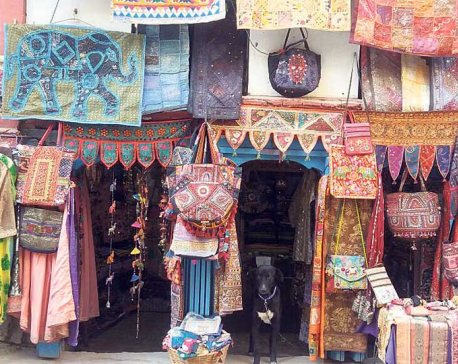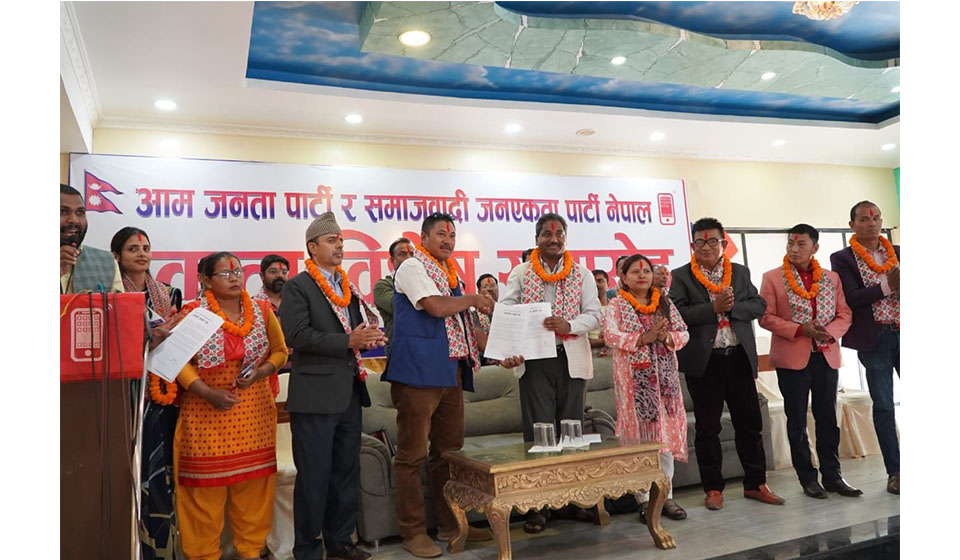
OR
Correcting the fault lines of trust
Published On: December 1, 2020 06:27 AM NPT By: Purushottam Ojha

Elites in the capital must pay attention to the realities faced by the people in the border areas while defining the scope of bilateral relations between Nepal and India.
Nepal-India relation is multi-dimensional. We share common culture, language, religion, and societal values. Thus, relations between the two countries cannot be merely defined on nation-state concept since it is built on the strong foundation of social linkages since early times. The daily interaction among various communities in the border lands are manifested on petty trade, farming practices, cultural and social exchanges, education and health services. Hence, elites in the capital must pay attention to the realities faced by the people in the border areas while defining the scope of bilateral relations.
Our economies are linked and intertwined in the thread of supply chain from production of goods and services to trading across the border and reaching out to the final consumers through a series of intermediaries. Besides, cross-border movement of blue collar workers, large number of people traveling daily for trade, visiting relatives, pilgrimage, tourism, education and medical services complement the economy, also cementing the people-to-people linkages. Social blend based on nuptial relations and job and employment across the border gave rise to the clichés of Roti-Beti ko Sambandha (bread and bride relation), popular among the people in the border lands.
Now the scope of this phrase is expanded at a broader level with a notion of relation based on security, connectivity, electricity and value chain integrity. These parameters largely gives fillip in taking the bilateral relations to a new trajectory.
This year experienced turmoil in bilateral relations between Nepal and India due to border issues involving Limpiyadhura Kalapani and Lipulekh. The construction and inauguration of a 80 km road on the disputed land by the government of India triggered retaliation by the government of Nepal enacting a new cartographic map including the territory within the Nepali boundary into it. This was the bone of contention and cause of frigid relation which has started thawing with the recent visit of high level dignitaries including the visit of Indian foreign secretary.
Those visits should be viewed in a positive tone supposedly to facilitate further consultation at various level of government. Reactivation of existing institutional mechanisms should be a priority for two governments which would require creating an environment of trust and confidence for bringing the dialogue partners across the table and resolve the differences.
Besides border issues, there are other areas that could be harnessed for promoting mutually beneficial cooperation and enhancing welfare of the people. There are pending issues like acceptance and recognition of EPG report by the government of India, inundation problems in Tarai area, and delay in implementation of important infrastructure projects like Hulaki road, railway connectivity, upper Karnali and Pancheshwor hydropower projects. Low hanging fruits like improving trade, transit and investment regimes should be the priority for advancing into more complicated issues and bring transformational change in the level of bilateral relation.
India used to be the main source of FDI in Nepal till 2016. China now surpasses India in level of investment occupying 36 percent of the total FDI as India ranks second with 29 percent of the total FDI stocks. The level of investment could be increased with facilitation measures and marketing of Nepal as investment destination. Road show of the potential investment projects; removing domestic hurdles created by complex rules and regulations and improving governance are the necessary condition for a healthy investment climate. Promoting transparency and rule-based system, reducing red tape, administrative and procedural delays, and honesty in interpretation and implementation of the rules and regulation are the basics in governance reform.
India is the largest trading partner that maintains two-thirds trade (export and import trade) of Nepal. According to the Department of Customs, share of India remained 71 percent of export and 61 percent of import trade of Nepal in 2019-20. However, the dark side of the story is that Nepal is facing the worst trade imbalance in its economic history; import outpaced export by 13-15 time in recent years. Prevalence of non-tariff barriers hindered growth of export. This requires ensuring quality of products, harmonization of standards and mutual recognition agreement between the trading partners.
Almost 90 percent of overseas trade of Nepal passes through the Indian ports, road and railways. Three agreements namely treaty of trade, transit and rail service agreements provide legal framework for regulating the bilateral and transit services to Nepal. Besides, a MOU was signed in 2019 to use the IWT as additional mode of transport for transit traffic. But modality for movement of cargo through this mode of transport is yet to be finalized. Modifications in the treaty of trade and transit is warranted for simplification of existing transit procedures, documents and reducing the cost of transaction. Efficiency could be improved by the application of information and communication technology. Electronic cargo tracking system was introduced on a pilot basis almost three years back but this needs yet to be recognized as a permanent mechanism of transit services.
There are few but critically important international instruments that indicate pathways for facilitation of transit and cross-border trade. Revised Kyoto convention, WTO trade facilitation agreement, and Vienna program of action are some of such instruments endorsed by the government of Nepal and India as well. Further negotiations on bilateral treaty of trade and treaty of transit should reflect on the perspectives of these instruments and global best practices.
Expansion of trade and investment demands increased connectivity and development of critically important physical as well as non-physical infrastructures. Development of such infrastructures goes a long way in sustaining the process of economic cooperation and integration. The BBIN process, as microcosm of SAARC, is now emerging as the potential cooperation mechanism in transport and connectivity in the sub-region. However, cooperation on travel, tourism, and services, trade capacity building and effective cross-border consultation could be viewed as the important tasks in bilateral agenda. But this requires building up an ambience of trust, confidence and strong political commitment to move together in the path of prosperity.
The author is the former Secretary, Government of Nepal. Views are personal.
You May Like This

A bountiful hub for culture and trade Basantapur
Cultural books and magazines compiling the history and festivals of Nepal are in high demand among the flock of tourists... Read More...

Mismatch in Nepal-India trade figures indicates huge informal trade
KATHMANDU, April 13: There is a huge mismatch between Nepal’s total imports from India and the southern neighbor’s exports to Nepal,... Read More...

Mismatch in trade figures indicates huge informal trade
KATHMANDU, April 12: There is a huge mismatch between Nepal's total imports from India and the southern neighbor's exports to Nepal,... Read More...


Just In
- Sunkoshi-Marin Diversion Project’s tunnel construction nears completion, breakthrough scheduled for May 8
- Govt tightens security arrangement for Third Investment Summit 2024
- Pesticide residue found in vegetables in Nepalgunj
- Aam Janata Party and Samajwadi Jana Ekata Party merge
- 1,600 participants confirmed for Nepal Investment Summit
- Ilam-2 by-elections held peacefully, vote count likely to start tonight
- NEA schedules five-day power cut across Kathmandu Valley for underground cable installation
- Hundreds of passengers including foreign tourists in distress as poor visibility halts flights to and from PRIA








-1200x560-wm_20240427144118.jpg)






Leave A Comment